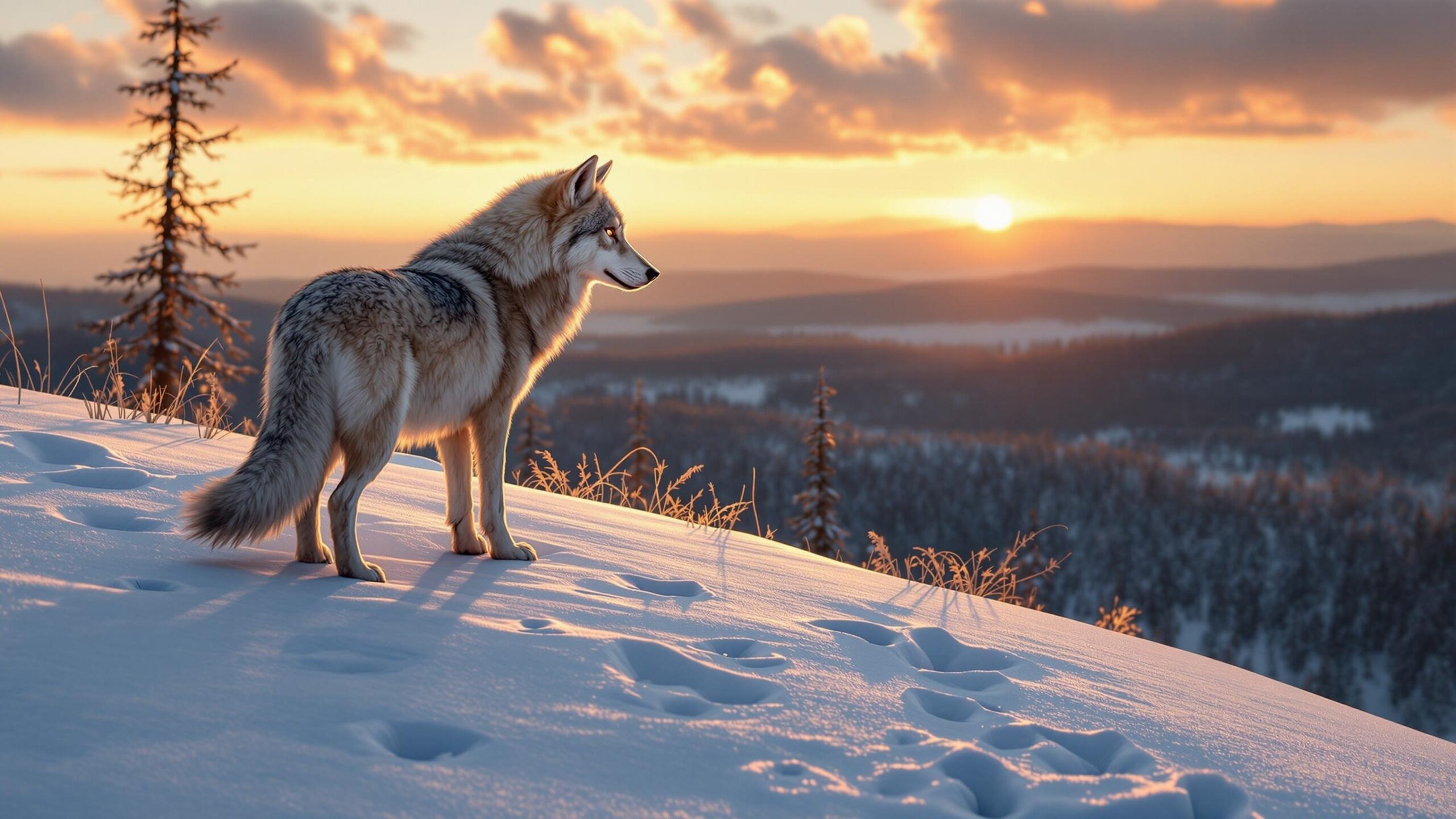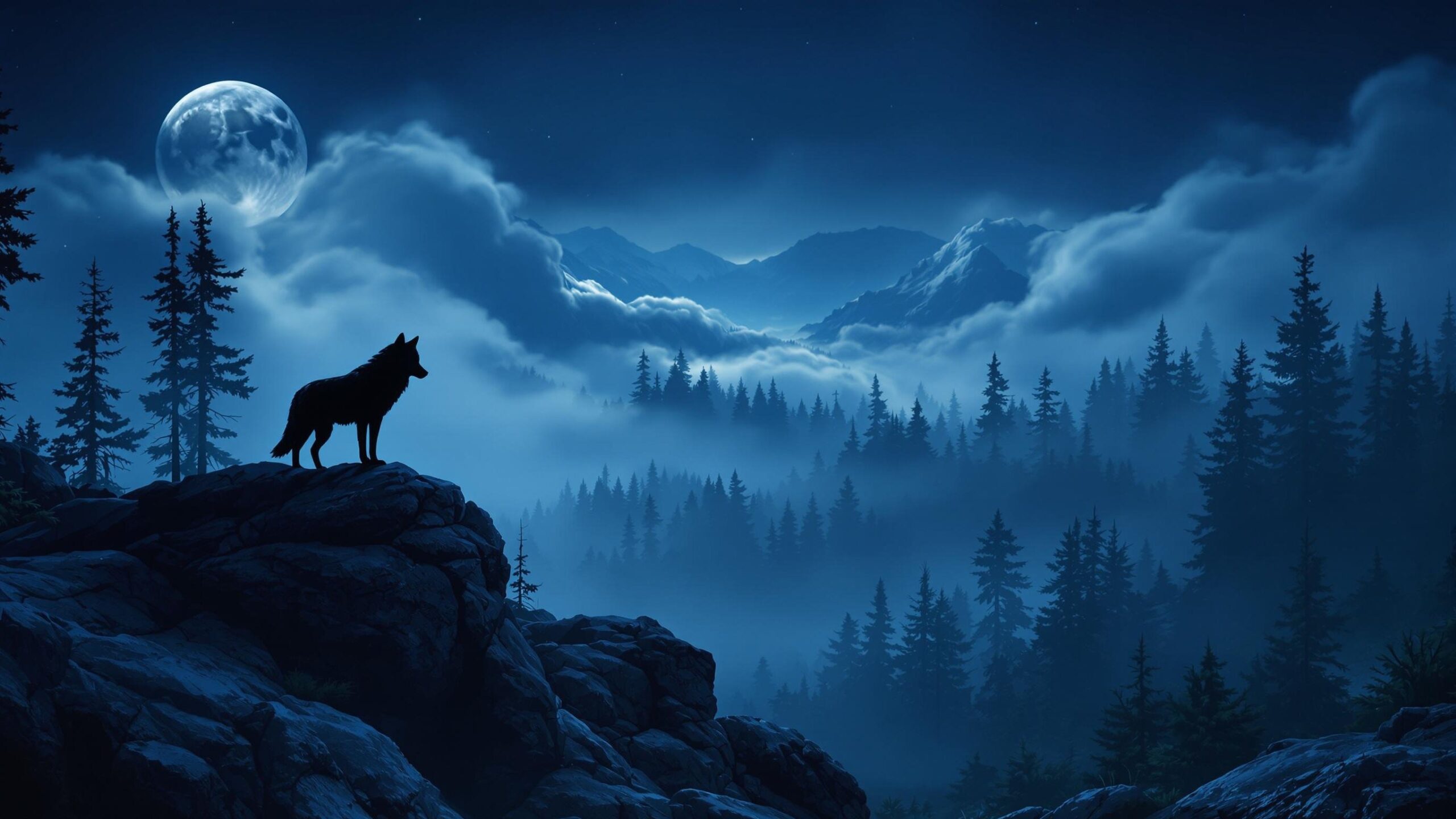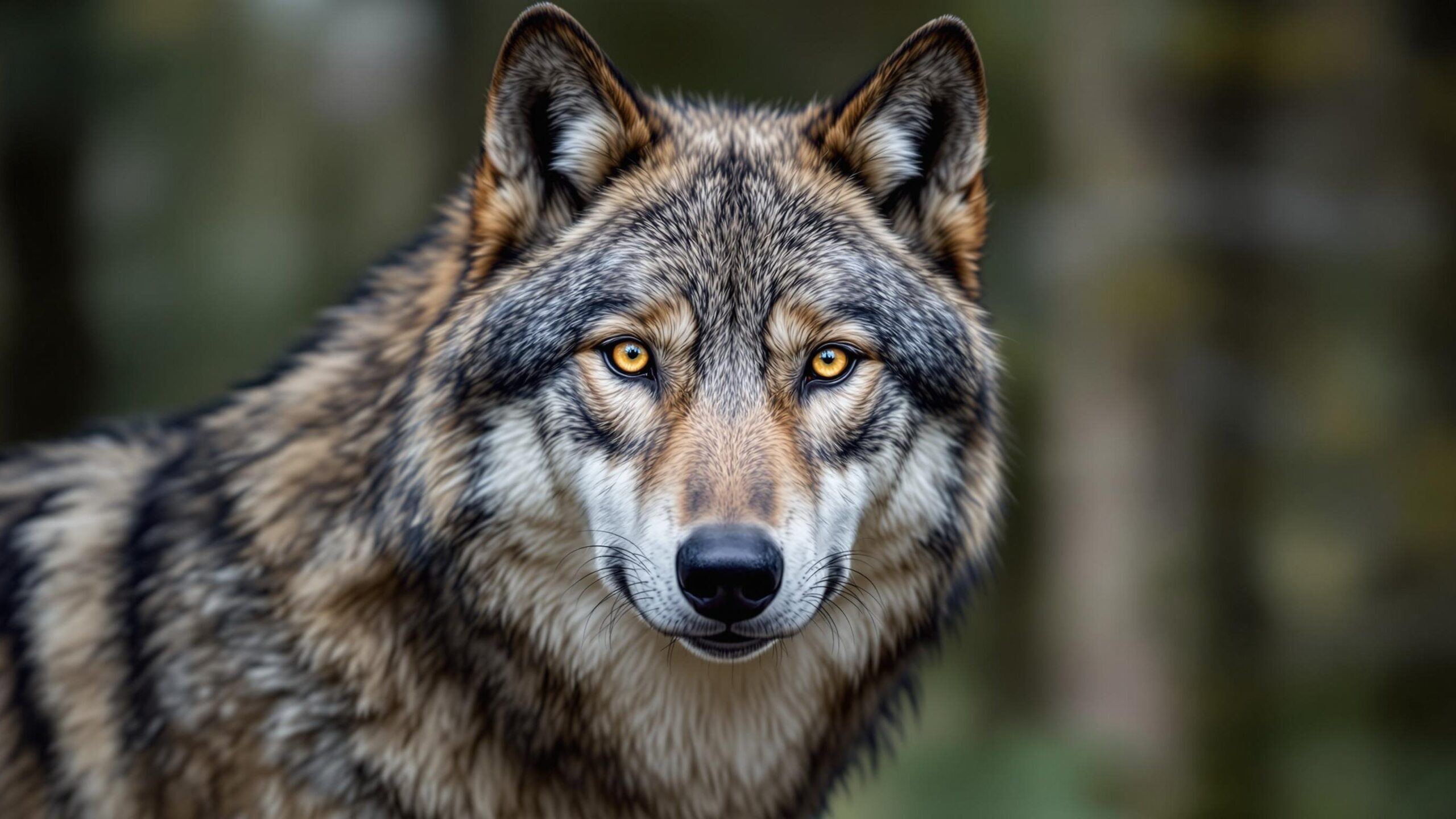Gray Wolf: Exploring the Life, Power, and Legacy of Canis lupus
The gray wolf, known scientifically as Canis lupus, is one of the most iconic and recognizable animals in the world. Revered in myths, feared in folklore, and celebrated in wildlife documentaries, the gray wolf has long captivated the human imagination. But beyond the symbolism lies a complex and fascinating predator—one that plays a critical role in ecosystems across the Northern Hemisphere. From the icy tundra of Canada to the highlands of India, the gray wolf has adapted, survived, and, in many cases, made a dramatic comeback. In this comprehensive guide, we explore everything from its biology and behavior to its diverse subspecies and global range, offering readers a deep and engaging look at one of nature’s most influential creatures.
The Biological Blueprint of a Super Predator
The gray wolf is the largest member of the wild dog family, or Canidae, and shares a common ancestor with domestic dogs. Adult gray wolves typically weigh between 70 and 110 pounds, though larger individuals in northern environments can exceed 130 pounds. With long legs, powerful shoulders, and a narrow chest built for endurance, wolves are perfectly designed for distance travel and cooperative hunting. Their thick double-layered coats help them survive in a wide range of climates, from arid deserts to subzero Arctic landscapes.
What makes the gray wolf truly special is its brainpower. Highly intelligent and deeply social, wolves live and operate in structured packs that usually consist of a breeding pair (often referred to as the alpha male and female) and their offspring. These packs function like tight-knit families, with each member playing a role in hunting, pup-rearing, and territory defense. Communication between wolves is rich and nuanced, involving vocalizations such as howls, growls, and whines, as well as body language and scent marking. Far from being simple wild animals, gray wolves demonstrate problem-solving skills, emotional bonds, and strategic thinking.
Range and Habitat: A Master of Environments
Few terrestrial mammals have demonstrated the ecological flexibility of the gray wolf. Historically, wolves ranged across most of North America, Europe, Asia, and the Middle East. Today, after centuries of human conflict and habitat loss, their range has contracted significantly, but strongholds still exist in Canada, Alaska, Eastern Europe, Russia, Mongolia, and parts of Asia. Thanks to modern conservation efforts, wolves have also returned to regions of the continental United States, including Yellowstone, the Northern Rockies, the Great Lakes, and the Pacific Northwest.
Gray wolves can thrive in an array of habitats—boreal forests, tundra plains, grasslands, mountains, and deserts. Their ability to adapt to such diverse settings comes down to their generalist nature. They can hunt a wide range of prey species, adjust to climate changes, and cover massive territories—sometimes over 1,000 square miles—in search of food and mates. In places like Yellowstone National Park, wolves have even demonstrated the ability to reshape entire ecosystems, restoring balance through their top-down influence on prey species.
A Wolf’s Diet: More Than Just a Carnivore
As apex predators, gray wolves are meat-eaters, but their diets are more varied than one might assume. In the wild, their primary prey consists of large ungulates such as deer, elk, moose, and caribou. A single wolf pack, depending on its size, can bring down animals many times their weight through coordinated attacks. Each member has a role, with experienced hunters often leading chases and younger wolves learning through participation.
But wolves are also opportunistic feeders. They scavenge when necessary and won’t hesitate to consume smaller mammals, birds, fish, or even fruit if food is scarce. In lean times, wolves have been known to eat rodents, rabbits, and carrion. Their adaptability is one of their greatest evolutionary advantages, allowing them to survive seasonal shortages and ecosystem disruptions.
What is perhaps most misunderstood is the relationship between wolves and livestock. Though wolves will occasionally prey on domestic animals when their natural prey is unavailable, such events are relatively rare and often exaggerated in public discourse. In most regions, livestock losses attributed to wolves make up a very small percentage of total losses, and various deterrent strategies have proven effective at reducing such incidents.

Family Life and Pack Dynamics
The gray wolf is among the most socially complex carnivores on Earth. At the core of this complexity is the pack—a family unit that thrives on cooperation and hierarchy. Pack sizes vary depending on the availability of food and habitat, ranging from as few as three wolves to more than a dozen. Packs are generally led by the breeding pair, which produces one litter of pups each spring. Pup-rearing is a shared responsibility. After a gestation period of around 63 days, the mother gives birth to 4 to 6 pups, which are initially blind, deaf, and completely dependent. Other members of the pack, including older siblings, help feed, guard, and teach the young. The pups begin emerging from the den after three weeks and start accompanying the pack on short trips by two months of age.
Dispersal is another vital part of wolf social structure. Around one to three years of age, young wolves often leave their natal pack to search for new territory and potential mates. These dispersing wolves can travel hundreds of miles, expanding genetic diversity and occasionally forming new packs if successful in establishing territory.
Subspecies and Regional Variation
The gray wolf species includes several subspecies, shaped by geography and environmental pressures. Some of the most well-known include the Northwestern wolf (Canis lupus occidentalis), the Eurasian wolf (Canis lupus lupus), the Iberian wolf (Canis lupus signatus), and the Mexican wolf (Canis lupus baileyi), among others. The Northwestern wolf, often found in Canada and Alaska, is among the largest and most robust, well suited to cold environments and large prey like moose and bison. The Mexican wolf, by contrast, is smaller and more lightly built, adapted for the desert and mountain ecosystems of the American Southwest and northern Mexico. Once nearly extinct, the Mexican wolf is now the subject of a high-profile reintroduction effort.
The Eurasian wolf, ranging across Russia, Central Asia, and parts of Europe, displays a wide range of coat colors and behaviors. In regions like Spain, the Iberian wolf exhibits distinct traits and behaviors, shaped by centuries of coexistence with human agriculture and terrain. Each of these subspecies demonstrates how wolves evolve to fit specific ecological niches. Studying them helps scientists understand broader evolutionary processes and biodiversity patterns.
Howling and Communication: The Voice of the Wild
The howl of the gray wolf is one of nature’s most stirring sounds. Far from being a simple expression of loneliness or threat, howling serves a variety of complex purposes. Packs howl to announce territory, rally group members, signal distress, or reinforce social bonds. Each wolf’s howl is slightly different, allowing for individual identification. Communication doesn’t stop at howling. Wolves use a wide array of vocalizations, body postures, ear positions, tail movements, and scent markings to communicate. A lowered tail and flattened ears might signal submission, while a dominant stance with raised hackles and a stiff tail can assert control. Through these subtle cues, pack dynamics are maintained with remarkable precision. This rich communication system reveals the emotional and cognitive depth of the species. Wolves are capable of forming deep attachments and demonstrating grief, excitement, curiosity, and caution, often displaying behaviors that seem surprisingly human to observers.

Human Perception and Cultural Significance
The gray wolf has occupied a central place in human culture for thousands of years. In Native American traditions, wolves are often seen as teachers, pathfinders, or symbols of strength. In Roman mythology, the founders of Rome—Romulus and Remus—were famously raised by a she-wolf. Nordic legends feature wolves as harbingers of transformation and war. On the flip side, wolves have also been vilified. From medieval tales of werewolves to European fairy tales like Little Red Riding Hood, the wolf has often been portrayed as a menace to be feared. These negative images contributed to widespread persecution, including mass culls and bounties in the 18th through 20th centuries that decimated wolf populations across Europe and North America. Today, the cultural conversation is more balanced. As scientific understanding grows and ecological benefits are better appreciated, wolves are regaining a more positive image. Films, documentaries, and books have helped reshape public opinion, casting wolves not as monsters, but as essential parts of healthy ecosystems.
Wolves and the Web of Life: Ecological Importance
Wolves are keystone species. This means their presence—or absence—has a disproportionate impact on the ecosystems they inhabit. One of the most celebrated examples of this is the reintroduction of wolves to Yellowstone National Park in 1995. With the return of wolves, elk behavior changed. Overgrazed areas began to recover. Willow and aspen regrew. This in turn helped beavers, birds, and fish. Rivers even changed course due to increased vegetation stability—a stunning ripple effect driven by a single species.
By keeping herbivore populations in check, wolves promote biodiversity and habitat regeneration. They also limit the spread of disease by culling sick animals and create scavenging opportunities for other species through leftover prey. In this way, wolves shape landscapes far beyond their immediate presence.
Modern Conservation and Coexistence
While it’s important to acknowledge past efforts that wiped wolves out of large portions of their range, today’s story is one of recovery, collaboration, and often controversy. In North America, wolves have rebounded in several regions thanks to legal protections, reintroduction programs, and changing public attitudes. In Europe, populations are also on the rise, reclaiming territory in countries like Germany, France, and Italy.
Yet challenges remain. Wolves often find themselves at the center of political debates involving livestock, rural land rights, hunting, and environmental policy. Conservation groups work closely with farmers, landowners, and local governments to develop non-lethal methods of conflict resolution. These include livestock guard animals, electric fencing, and compensation programs for lost animals.
The debate over wolf management is nuanced and ongoing. But what’s clear is that with responsible conservation strategies, wolves and humans can coexist. The success stories in places like Yellowstone and the Alps prove that balance is possible, and that when we allow wildness to return, nature flourishes.
The Road Ahead for the Gray Wolf
The gray wolf’s future is a reflection of our values. It forces us to confront questions about how we share land, how we manage biodiversity, and what kind of relationship we want with the natural world. As one of the most studied and symbolically powerful species on Earth, the gray wolf offers lessons in resilience, cooperation, and interdependence. Whether standing alert on a frozen ridge or howling into the dusk, the gray wolf continues to be a living symbol of wilderness. For all its power, it remains vulnerable to misunderstanding and misplaced fear. But it also stands as a shining example of nature’s ability to recover when given the chance. Now more than ever, the world of the gray wolf is worth exploring, understanding, and protecting. From the thick pine forests of Canada to the golden deserts of Mexico, their story stretches across continents and centuries. As you dive deeper into the world of wolves, remember this: their survival is not just about them—it’s about us, too.

